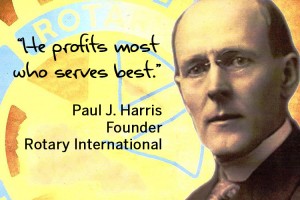 Since 1993, control of the three major elements of your customer relationships – product, information, and buying decision – has shifted from your business to your customer. This marketplace transition is, by definition, a Biblical proportion paradigm shift from the original, 10,000-year-old Age of the Seller, to the new Age of the Customer.
Since 1993, control of the three major elements of your customer relationships – product, information, and buying decision – has shifted from your business to your customer. This marketplace transition is, by definition, a Biblical proportion paradigm shift from the original, 10,000-year-old Age of the Seller, to the new Age of the Customer.
This shift has created many disruptions across the marketplace, but none more than to the discipline of professional selling. More specifically, the element that has been disrupted most is business-to-business prospecting.
If your sales effort isn’t getting the job done, it’s probably not because your sales team isn’t working hard enough, or has forgotten how to close – a process that has not been disrupted. It’s because the rules of prospecting have been turned upside-down. Here are four facets to this prospecting shift:
1. The era of buyers accepting prospecting cold calls is over. Cold calling was never high-percentage, but in the Age of the Customer, it’s a fool’s errand.
2. After 10,000 years of needing a salesperson to provide critical information to make an informed decision, buyers are acquiring much of that information on their own, online.
3. Prospects are now self-qualifying themselves and pre-qualifying prospective vendors. In the Age of the Seller, a prospect might have considered a dozen vendors, but in the new Age, that number might be as few as two, maybe even just one.
4. Here’s the cold-sweat, scary part of this new reality: Vendors are being ruled in or out before they know the prospect even exists.
Prospects like this new empowerment because it saves time, contributes to their decision-making journey, and reduces contact with uncompetitive, and therefore, irrelevant vendors. Consequently, getting in front of a prospect for a first meeting, which once was relatively easy and almost automatic, now requires more time, effort and strategy to address the following new rules of prospecting.
1. Prospects require demonstration of some level of relevance before granting an introductory meeting, let alone a sales call.
2. Research isn’t complete until you’ve discovered how to be relevant to that individual prospect. Don’t rush this step; the prospect decides what’s relevant.
3. Networking – in person and online – is non-negotiable. You must become a professional networker.
4. Prospect development and nurturing must be practiced with patience and a dialed-down sense of urgency. Desperate salespeople conduct desperate prospecting, which not only doesn’t work, it burns bridges.
5. Since prospects now presume the vendor they choose will be competitive, don’t lead with any element of the price/product/service value proposition. That won’t get you through the door.
6. Don’t be afraid to demonstrate your corporate values. Today, what your company stands for is a major relevance factor.
7. “Contribute first, contract second” is the Holy Grail of relevance.
Even the best salesperson – who will still need every classic, selling skill to close the sale – is useless if he or she can’t get in front of the prospect before the qualifying decision has been made.
Companies that expect to meet sales goals now have to put more emphasis and resources in training, equipping, budgeting and measuring prospecting skills. Perhaps for the first time ever, consider breaking out prospecting performance as an element of the overall compensation plan. Remember, you can’t close them if you never get to talk to them.
Write this on a rock … Which Age is your sales organization prospecting in?









